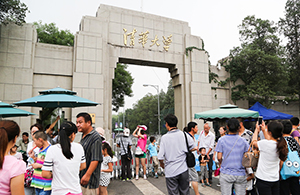Fire warrants investigation into safety inspection tour
(China Daily) Updated: 2016-04-25 07:32
 |
|
A warehouse storing chemicals and fuel exploded and caught fire in the eastern Chinese city of Jingjiang on Friday, April 22, 2016. [Photo/Sina Weibo] |
Thousands of residents were evacuated and a firefighter died in Jingjiang, East China's Jiangsu province, on Friday when poisonous and flammable chemicals caught fire. The blaze lasted more than 10 hours. The incident happened one month after the local safety department officials inspected the site, and Beijing News asks whether the inspection was merely a show:
Fires in chemical plants and storage houses are especially dangerous as they often cause explosions. After the explosions at a chemicals storage warehouse in Tianjin on Aug 12, last year, safety departments all over the nation strengthened their regulation and supervision of storage facilities for dangerous chemicals.
The officials in charge of safety in Jingjiang did this too. On March 10, Zhu Xiaobo, the local official in charge of safety issues, paid an inspection tour to the warehouse where the fire broke out. The local government website even shows he inspected the fire-prevention devices and put forward proposals.
But still the fire happened, so of what use was his inspection tour for accident prevention? Did he approve the storehouse's fire-prevention measures? If yes, did he fail in his duty? If no, what were his proposals and were they accepted?
That arouses suspicions that Zhu's inspection was nothing but a show. Such shows are rather common: the inspected company prepares everything in advance, the inspector follows a pre-arranged route, applauds everything and gives some advice that does not make any difference. Sometimes the company pays the safety department some money and everything is OK. Yet neither the company nor the safety department has taken any effective measure to ensure safety.
The Jingjiang fire suggests how detrimental such shows can be.
- Blaze doused at chemical storage site
- 1 killed in Taiwan chemical plant blast
- 583 chemical works closed, relocated, corrected in Tianjin blast site
- China's environment authorities to screen chemical hazards
- Chemical firms must search for a more solid future
- Tianjin chemical factory violated rent regulations: investigation
- Chemical plant leak poisons 20 in central China

I’ve lived in China for quite a considerable time including my graduate school years, travelled and worked in a few cities and still choose my destination taking into consideration the density of smog or PM2.5 particulate matter in the region.











